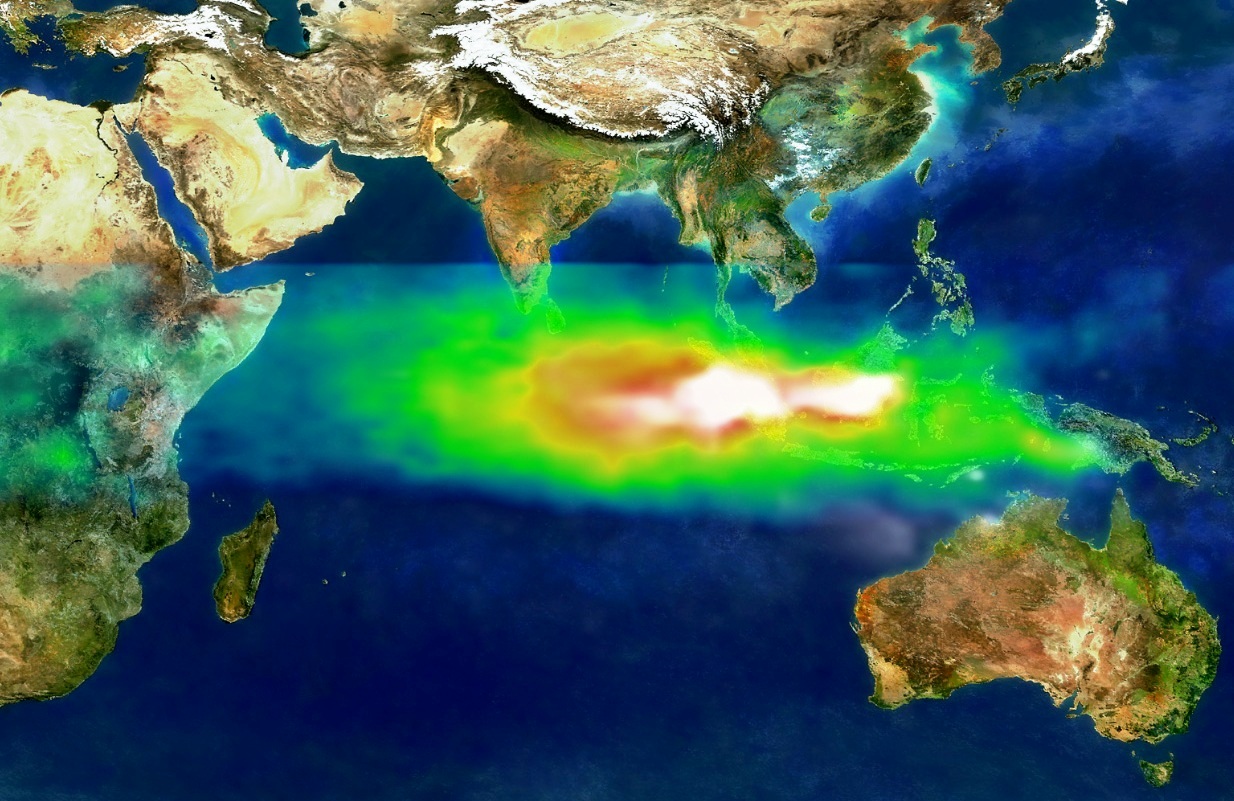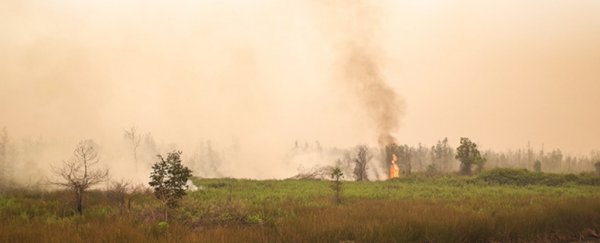In 1997, Indonesia was devastated by a series of uncontrollable wildfires, now considered some of the worst in history.
During this tragic event, nearly 11 million hectares (27.2 million acres) of land were set ablaze for new crops, with smoke and haze extending far and wide, smothering Brunei, Thailand, Vietnam and the Philippines.
The air pollution at this time was so awful it might have actually stunted the next generation's growth.
New research has now found evidence that even children in the womb were exposed to this smoky pall, potentially making them several centimetres shorter as a result.
The findings suggest that toxic air is able to filter down into fetus' oxygen supply, causing irreversible changes that can potentially lead to low birthweight and shorter height in adulthood.
"While previous research has drawn attention to the deaths caused by the forest fires, we show that survivors also suffer large and irreversible losses," the authors write.
 (NASA)
(NASA)
It's commonly known that air pollution can cause health repercussions, especially in children, but the new findings suggest that forest fires are more harmful than we previously imagined.
The 1997 fires were particularly catastrophic. Together, they released a shocking amount of sulphides, nitrous oxides and ash into the air, generating a quarter of all carbon emission for that year and ultimately pushing pollution levels to a previously unparalleled height.
In some areas, breathing the air was essentially equivalent to smoking 20 cigarettes.
Today, it is predicted that some 20 million people had their health adversely affected by these wildfires, and thanks to the new research, we now know that number potentially includes a million infants and unborn children.
As part of the study, researchers at Duke University examined 560 affected children, who were either in the womb or less than six months old during the wildfires.
Analysing data on prenatal exposure to the fires as well as child nutritional outcomes, genetic information and other social factors, the researchers found that children born during this time were, on average, 3.3 centimetres (1.3 inches) shorter than they would have otherwise been at the age of 17.
This may not sound like much but it hints at a darker truth. Not only is height associated with a person's health, it is also linked to their standard of living and income.
The authors calculate that this decrease in height implies a loss of about 3 percent of average monthly wages, and this goes for approximately a million Indonesian workers born during this time.
Ultimately, the researchers argue, the cost of this event far outweighed its benefits. Before the fires began to burn out of control, they were purposefully started as a way to clear crop land as cheaply as possible, mainly for oil palm plantations, which produces palm oil.
But while farmers and oil palm growers may have saved money, the country as a whole lost much more. The Economy and Environment Programme for Southeast Asia (EEPSEA) estimates that the total losses for 1997 and 1998 could be $5-6 billion, after taking economic, environmental and long-term health effects into account.
As we begin to gather more and more research, the scales are simply being tipped even further in one direction, revealing just how short-sighted some of these burnings can truly be.
"By examining the case of tropical forest burning, we illustrate such myopia," the authors argue.
"Pursuit of short-term economic gains results in air pollution that causes long-term, irreversible health impacts."
This study has been published in PNAS.
